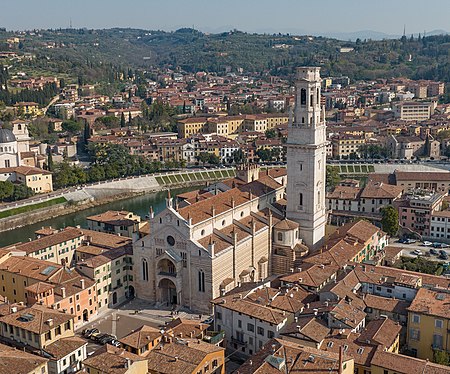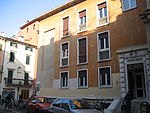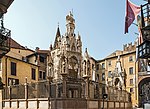Verona Cathedral
Burial places of popesCathedrals in VenetoChurches completed in 1187Roman Catholic cathedrals in ItalyRoman Catholic churches in Verona ... and 2 more
Romanesque architecture in VeronaSites of papal elections

Verona Cathedral (Italian: Cattedrale Santa Maria Matricolare; Duomo di Verona) is a Roman Catholic cathedral in Verona, northern Italy, dedicated to the Blessed Virgin Mary under the designation Santa Maria Matricolare. It is the episcopal seat of the Diocese of Verona. It was erected after two Palaeo-Christian churches on the same site had been destroyed by an earthquake in 1117. Built in Romanesque style, the cathedral was consecrated on September 13, 1187. The structure was later modified by several renovation interventions, although the plan has remained unchanged.
Excerpt from the Wikipedia article Verona Cathedral (License: CC BY-SA 3.0, Authors, Images).Verona Cathedral
Via Duomo, Verona Veronetta
Geographical coordinates (GPS) Address Website External links Nearby Places Show on map
Geographical coordinates (GPS)
| Latitude | Longitude |
|---|---|
| N 45.447045 ° | E 10.996849 ° |
Address
Cattedrale di Santa Maria Matricolare
Via Duomo
37121 Verona, Veronetta
Veneto, Italy
Open on Google Maps










